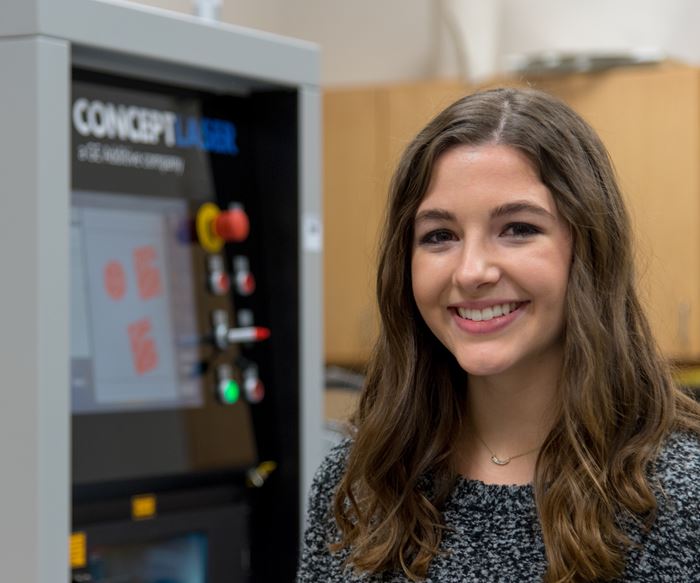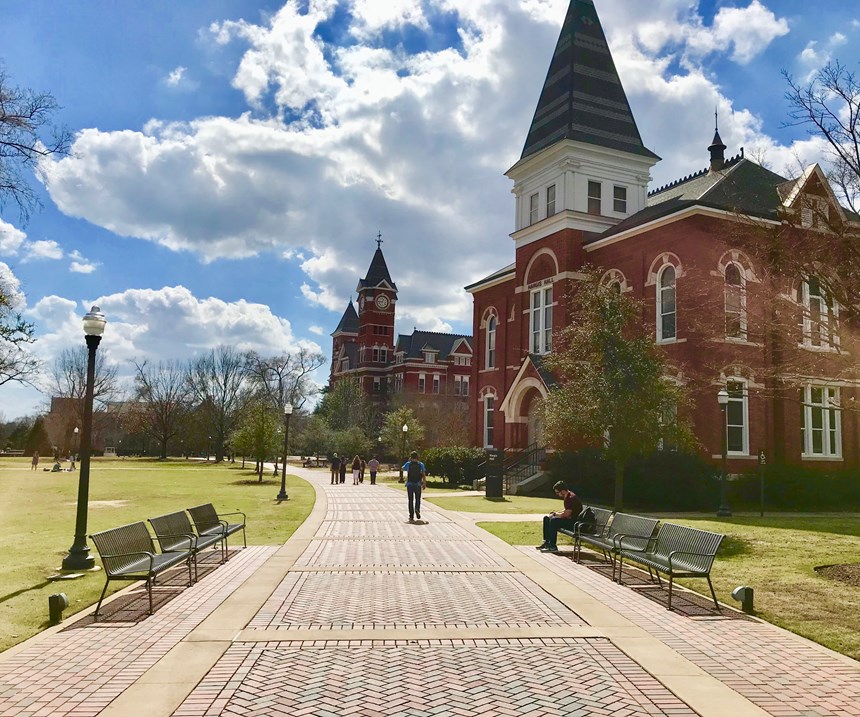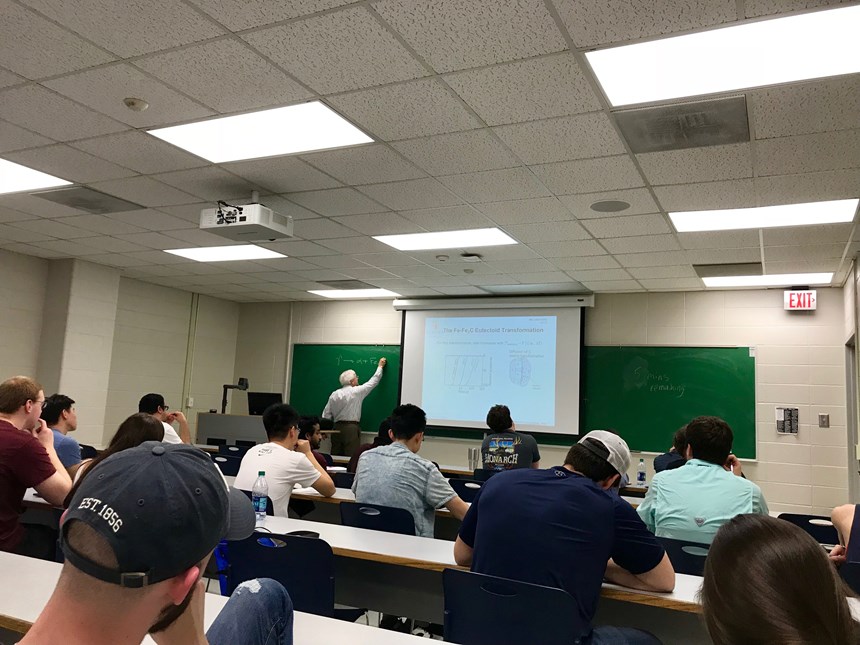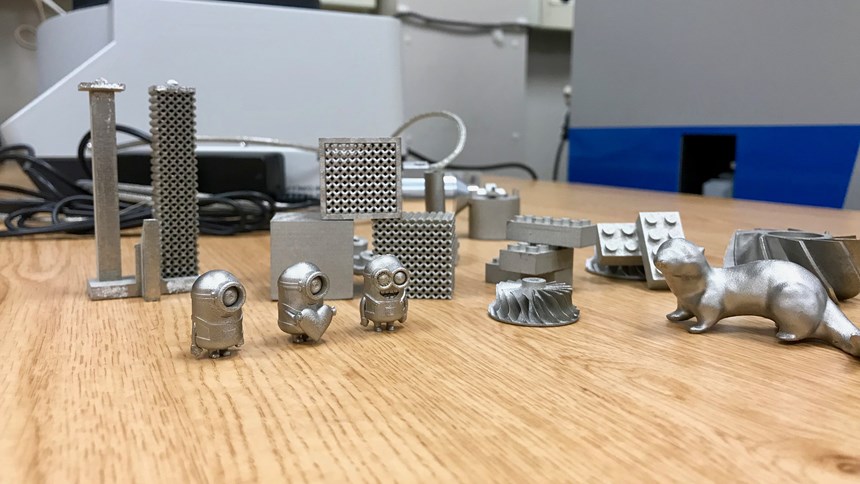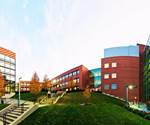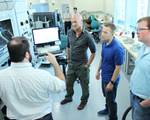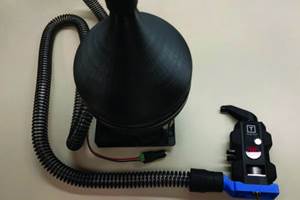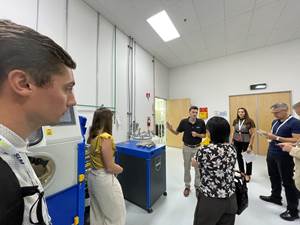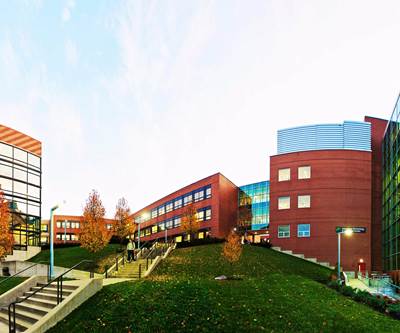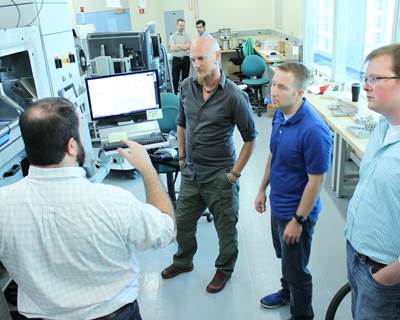I’m seated at a long table near the back of a classroom at Auburn University, listening to the 12th lecture of the semester by Dr. Ruel Overfelt, an Auburn engineering professor whose revered depth of knowledge is masked by a dry sense of humor and folksy southern drawl. The class is MECH-5970: Additive Manufacturing of Metals, and by this point in the semester we’re deep into the syllabus.
The easier material, the “fun” topics that may have attracted many of the 55 students in this classroom to additive manufacturing education—the lectures on laser systems, electron beam and arc welding, safety issues surrounding metal powders—are distant memories by now. Spring break is around the corner, and today we’re diving headlong into materials science. Professor Overfelt, spry, white-haired and known by colleagues as Tony, is whipsawing between chalkboard equations and projector slides on temperature-versus-time precipitation mapping, the molecular differences between coarse and fine pearlite, the effects of carbon diffusion across various metals, elongated iron carbide particles in alpha iron… You get the idea.
In other words, the class feels like what you’d expect from an upper-level engineering course at an elite university. What it doesn’t feel like is transformational, or revolutionary, or even particularly modern—all of which it is. The fact that these students are here, that this class exists, and that Auburn University offers a Certificate in Additive Manufacturing, are all clues to a sea change taking place in advanced manufacturing across the industrialized world. This class and the program behind it are a response to American business owners and managers who utilize AM, and who are asking similar questions with growing concern: Where are the engineers and machine technicians with additive manufacturing experience? Where do we turn for talent? Who’s going to work for us?
In Auburn’s case, its new Certificate in Additive Manufacturing, and more broadly, the university’s new Center for Industrialized Additive Manufacturing, is largely a response to one business in particular. You can probably guess which business—it’s the one printing LEAP engine fuel nozzle injectors about five miles southwest of campus. And the dynamic between this business and the university may provide a roadmap to additive manufacturing education across the United States.
“We Know How Universities Work”
It’s no secret in Auburn, Alabama, that GE, and specifically GE Aviation, is playing an outsized role in Auburn University’s strategy and investment in AM education. When GE was looking to ramp up its aviation operations in the region in 2014, the company sent representatives to speak with top administration and faculty from Auburn’s Samuel Ginn College of Engineering. GE wanted to augment its domestic additive manufacturing capabilities and was leaning toward utilizing its existing GE Aviation plant in the city of Auburn—which was itself only a few years old and still underutilized—rather than building a new plant elsewhere. Overfelt says that the company’s pitch to the university was straightforward and direct.
“GE said early on, ‘Look guys, we know how universities work,’” Overfelt recalls. “‘We know faculty want to do research, and we do too. But right now, our number one priority in Auburn, Alabama is to stand up this manufacturing plant. We're going to start adding additive manufacturing machines to this plant as we go, and workforce development is our number one concern. The wicket that you need to get through to access anything else that you might be interested in doing with GE is workforce development. You help us there, doors will start opening.’ They said that loud and clear.”
Over the next several months in 2015, Overfelt and other Auburn representatives—both from the university and the city—drafted a plan. At the time, the university was minimally invested in additive education, having only a couple of small FDM 3D printers housed within the engineering college but no coordinated additive program. What the university did have, however, was experienced professors like Overfelt and Dr. Bart Prorok, professor of materials engineering and director of Auburn’s Analytical Microscopy Center. Using their decades of teaching experience, Overfelt and Prorok sought to avoid the fate of many new academic curriculum proposals: a slow death by committee. (More on that later.) In the meantime, Overfelt and Prorok helped the college secure a three-year, $1.5 million grant from the National Institute of Standards and Technology (NIST) to research AM technologies and help smaller manufacturers provide high-volume production of metal parts.
Considering the rapid developments within AM, what does a higher-ed additive program look like? Do current AM workforce needs merit a college major? A minor?
In June of 2016, soon after Auburn announced the creation of its Center for Industrialized Additive Manufacturing, GE selected Auburn as one of eight universities worldwide to participate in the GE Additive Education Program. In its proposal to GE, Auburn made a commitment that its first priority would be workforce development, and GE awarded the university a new Concept Laser MLab 100R metal printer. By that time, Auburn had purchased two metal additive machines: a Renishaw AM250 and an EOS M290—machines that were on par with what GE Aviation was using at its Auburn plant at the time—and had hired two new faculty members to teach and provide research in metal additive technologies.
Having secured these assets, in 2016 the university established its new Center for Industrialized Additive Manufacturing, and named Tony Overfelt, whose official title is the William and Elizabeth Reed Professor of Mechanical Engineering, as its founding director. With GE Aviation 3D printing its LEAP fuel nozzles only a few miles away, Alabama had more additive manufacturing capacity than most countries, and Auburn University was making a commitment to ensure that that capacity was supplied with a highly skilled workforce.
But a central question remained: Considering the rapid developments within AM, what does a higher-ed additive program look like? Do current AM workforce needs merit a college major? A minor?
The Birth of a Program
There are two core factors that are informing higher education’s role in additive manufacturing today. The first is that, by and large, American universities are bureaucracy-laden institutions that exhibit a glacial pace of change. Most universities require that new academic program ideas be run through a gauntlet of committee approvals and abstruse formalities before being accepted into a college curriculum.
This was a critical consideration when Overfelt and Prorok were conceptualizing the additive program at Auburn University. If its new additive program were to begin as a major or a minor, it would face a potentially bruising journey that could take two years to ratify. Meanwhile, additive technologies and applications would advance, and companies like GE would be hard-pressed to wait for Auburn while piles of paperwork wound their way through a labyrinthine approval process.
The second factor, which is admittedly anecdotal, is that college minors aren’t as popular among today’s students as they once were. While many universities still require students to select a minor, many do not. Regardless, most minors require 12 to 15 hours over and above the normal course requirements for one’s major. It can be costly and time consuming, and those are relevant distinctions for any conversation about additive manufacturing education. Because once we agree that additive is too new and is evolving too rapidly to support a college major within the field, we might assume that the next logical home for a university program would be a minor.
Not so, says Overfelt. At least not at Auburn.
“There are some minors that do OK,” he says. “But by and large minors aren’t highly subscribed to because students don't want to take the extra hours—particularly if they don't feel like if you can make the case to them that the minor is going to lead to some enhancement of their résumé and marketability for a job. But if you've got scholarship money and you can basically pay them to take your minor, they'll sign up tomorrow. We've got minors that are kind of only viable because there's scholarship money being put in. There are certain industries that have to do that to get people interested in their industry and to generate a pool. In our case, I don't think that's the right thing to do.”
With these considerations in mind, Auburn landed on a solution: a certification program. Five classes, 15 semester hours, no university committees to consult. With the dean’s approval, Auburn’s Certificate in Additive Manufacturing opened for registration last year. As opposed to a minor, the certificate program does not require a mechanical engineering major who wants to pursue the AM certificate to pay for course hours beyond the requirements for his or her degree. This is a bit tricky to explain, but it’s an important distinction.
Auburn’s additive certificate program requires students to take three courses: the Additive Manufacturing of Metals course, taught by Overfelt, and two AM design courses. Students can then choose two courses among six electives that are currently offered. These courses cover CAD, virtual prototyping, fatigue, heat exchange design and heat transfer, and kinematics and dynamics of robots. But since these same courses are also available as mechanical engineering electives—and since the mechanical engineering major requires 12 elective hours—students can graduate with their bachelor’s degree and a Certificate in Additive Manufacturing without spending a penny extra for the certificate.
A Waiting List Each Semester
Auburn recently received part two of its NIST grant that the university is using to invest in a $1 million X-ray CT scanner from Pinnacle X-Ray Solutions. This machine, along with Auburn’s current array of metal 3D printers (as well as a custom EBM machine that professor Prorok and his students are building from scratch using cathode ray tubes from old television sets—a subject worthy of a separate article in the future) are soon to be housed in the Gavin Engineering Research Laboratory. Located in a circa-1929 facility formerly dedicated to textiles, the entire west wing of the building’s first floor will be dedicated to additive manufacturing when it opens this fall.
In the meantime, Overfelt’s Additive Manufacturing of Metals class is already filled to capacity. Advertising and promoting the program has been easy—so easy that it hasn’t required much actual advertising or promotion. “Additive is hot,” Overfelt says. “You just get the word out to students through the grapevine, and all of the sudden they all seem to know about it. We've had a waiting list every semester to get in that class. When we set it up, the only room we could find was one that had a hard limit of 65 students, so we set up the enrollment to be 55 undergraduates and 10 graduate students. Otherwise it would be larger.”
Back in Overfelt’s class, there’s a glaring distinction between this fluorescent-lit, windowless room and the warm, sunny Alabama weather outside. Spring break is around the corner, which may explain why at least a dozen students are absent today. The end of today’s class is devoted to reviewing the upcoming exam, which Overfelt asks his students if they’d prefer to take before or after spring break. (Before, unanimously.) The exam will be a mix of multiple choice, true or false, and an essay question or two. The test will cover the molecular differences between coarse pearlite and fine pearlite, and students should be able to show their understanding of the principles and concepts of temperature versus time precipitation mapping. “Do you guys remember that? I take it to be no since you’re staring at me like I’m a Martian,” he says to a few laughs.
About six students stay after class to ask the professor questions. These are the students who answered questions during class, the curious and engaged students—the ones who should have no problem finding work just a few miles down the road.
[Editor’s note: Just before publication of this article, Auburn University announced that NASA and ASTM International, a global standards organization, selected the university for two new additive-related partnerships. Here’s a portion of the statement from the University: “Expanding upon its existing relationship with NASA’s Marshall Space Flight Center, Auburn has formed the National Center for Additive Manufacturing Excellence. It already has more than 40 industry and government collaborators. The center, which will be housed within Auburn’s Samuel Ginn College of Engineering, will conduct research on improving the performance of parts that are created using additive manufacturing, share research results with industry and government collaborators and respond to workforce development needs in the additive manufacturing industry.” In addition, this May, Dr. Overfelt plans to retire from teaching and will work with the engineering college dean’s office. There, he plans to launch a college-wide initiative to expand Auburn’s applied research with industry and government agencies. “After founding the Center, I have now stepped down from the Center director’s position to focus on these new opportunities,” he says.]
Related Content
NIOSH Publishes 3D Printing Safety Guide for Nonindustrial Settings
NIOSH has published a 3D printing safety guide for small businesses and other additive manufacturing users such as makerspace users, schools, libraries and small businesses.
Read MoreUnderstanding PEKK and PEEK for 3D Printing: The Cool Parts Show Bonus
Both materials offer properties desirable for medical implants, among other applications. In this bonus episode, hear more from Oxford Performance Materials and Curiteva about how these companies are applying PEKK and PEEK, respectively.
Read MoreThe AM Ecosystem, User Journeys and More from Formnext Forum Austin: AM Radio #43
Sessions and conversations at the first U.S. Formnext event highlighted the complete additive manufacturing ecosystem, sustainability, the importance of customer education, AM user journeys and much more.
Read MoreCopper, New Metal Printing Processes, Upgrades Based on Software and More from Formnext 2023: AM Radio #46
Formnext 2023 showed that additive manufacturing may be maturing, but it is certainly not stagnant. In this episode, we dive into observations around technology enhancements, new processes and materials, robots, sustainability and more trends from the show.
Read MoreRead Next
Closing Additive Manufacturing’s Skills Gap
Cincinnati State’s new additive manufacturing certificate program offers a lesson in workforce need versus availability.
Read MoreInside the Penn State Additive Manufacturing Master’s Program, Part 1
PSU's engineering master's degree in additive manufacturing and design offers students and manufacturing professionals a higher education in a continuously maturing field.
Read MoreCrushable Lattices: The Lightweight Structures That Will Protect an Interplanetary Payload
NASA uses laser powder bed fusion plus chemical etching to create the lattice forms engineered to keep Mars rocks safe during a crash landing on Earth.
Read More


